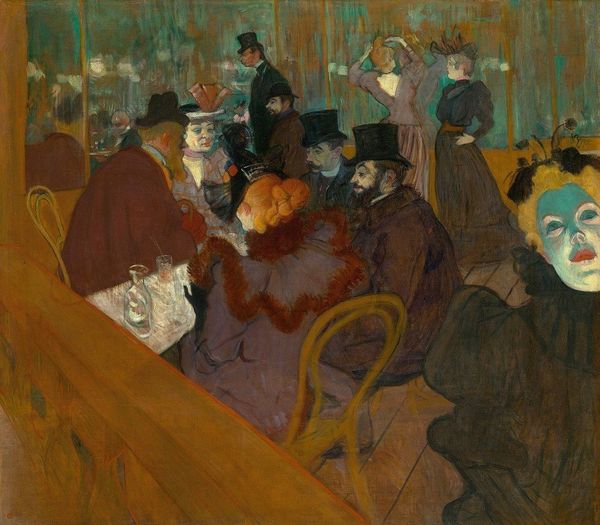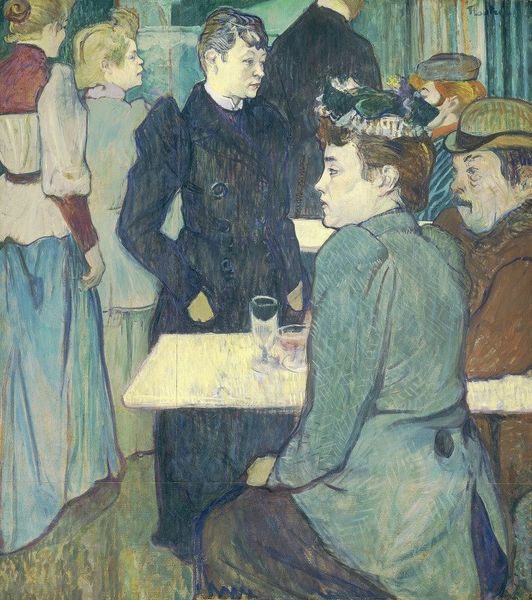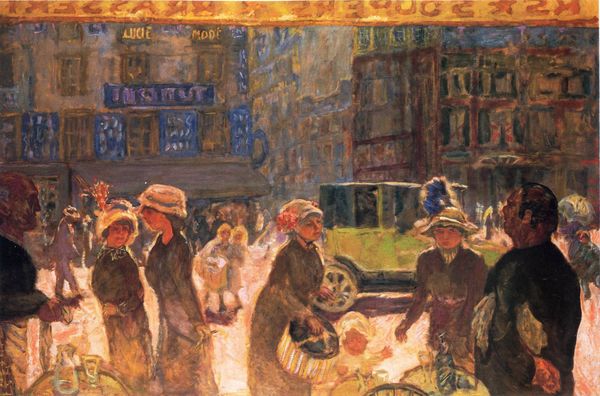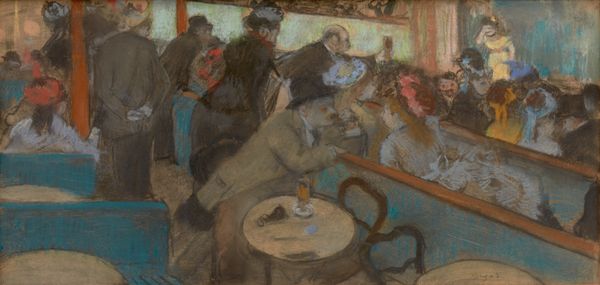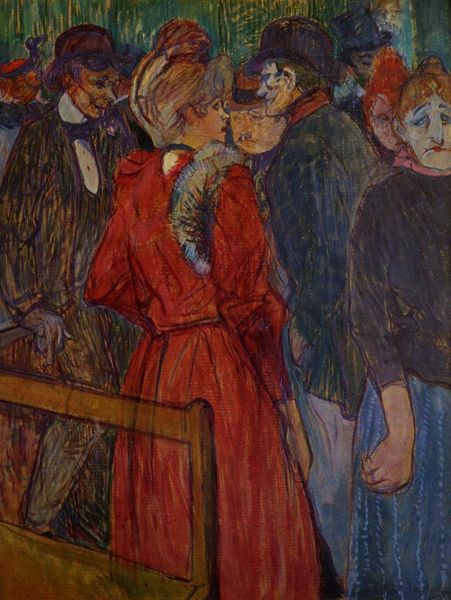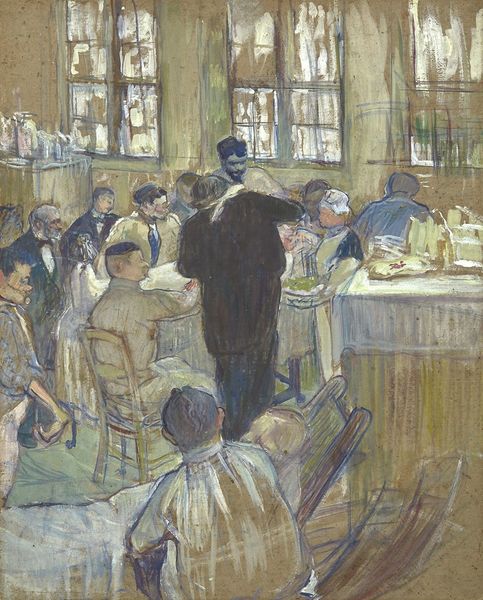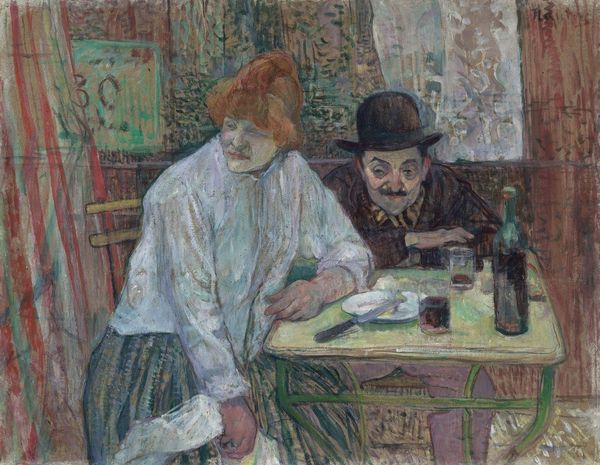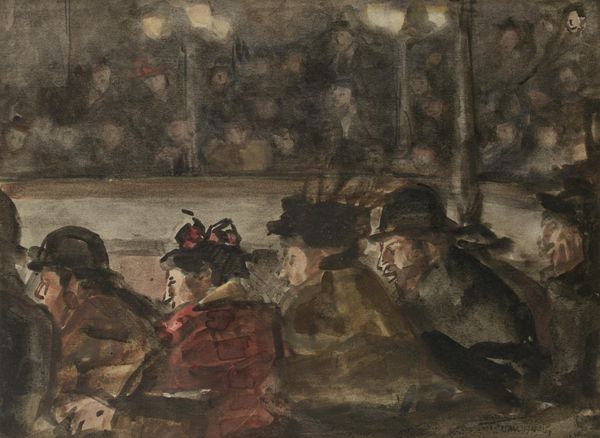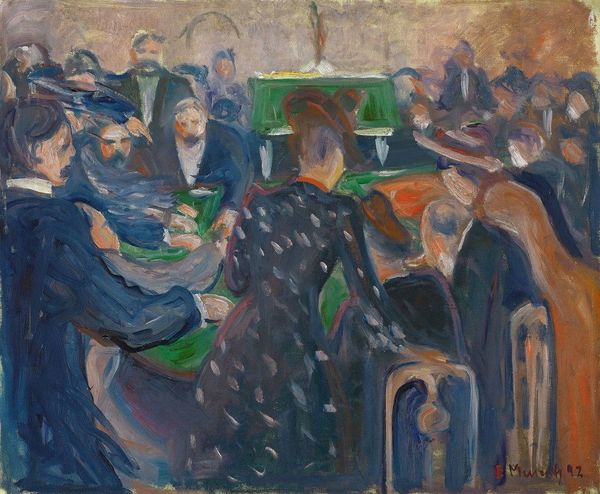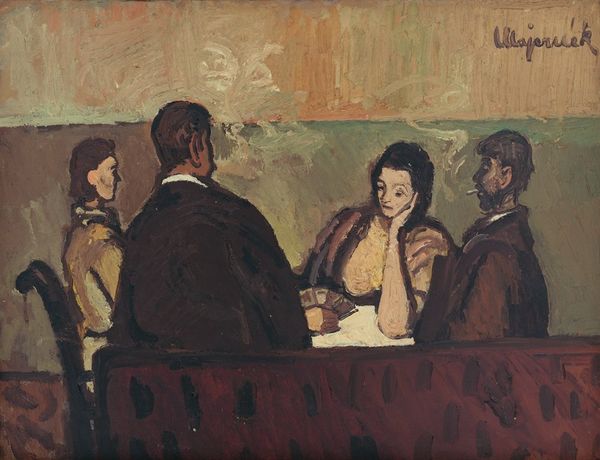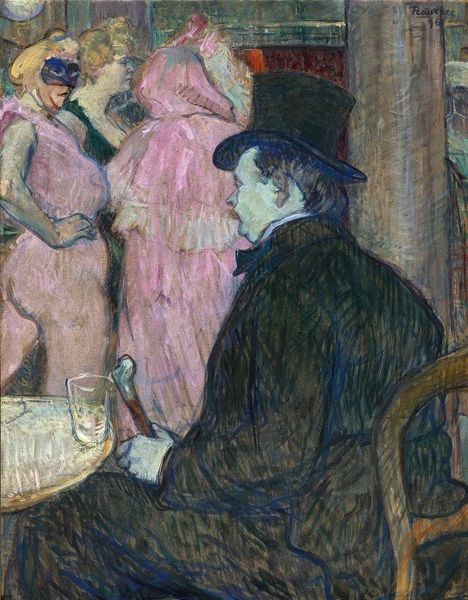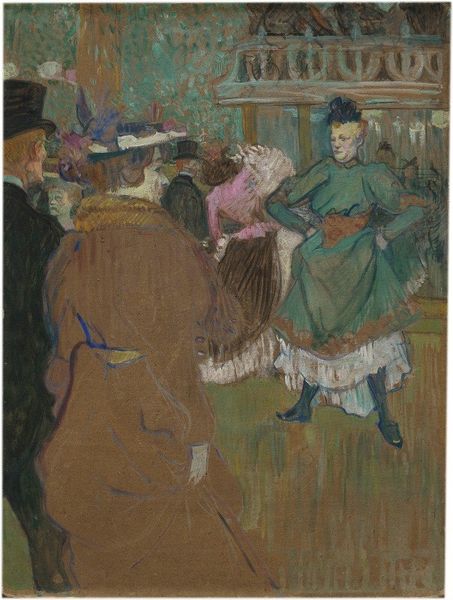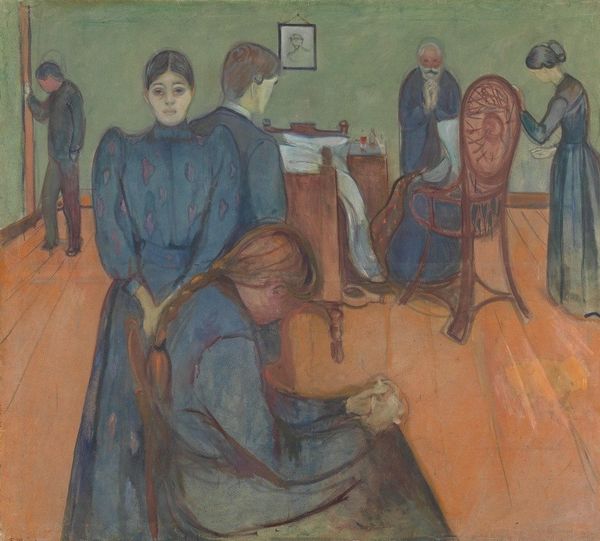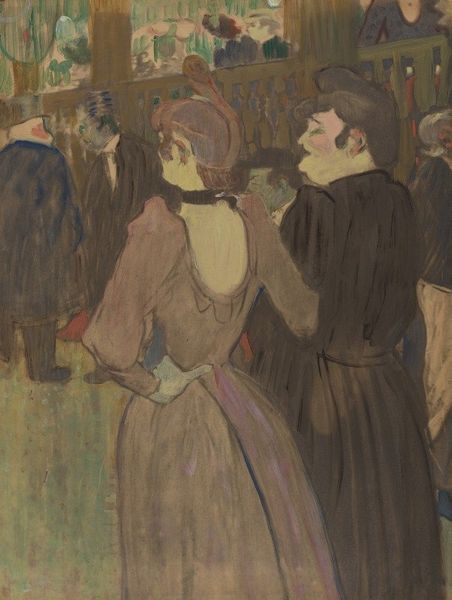
painting, gouache, impasto
#
portrait
#
gouache
#
figurative
#
painting
#
gouache
#
figuration
#
oil painting
#
impasto
#
painterly
#
cityscape
#
genre-painting
#
post-impressionism
#
watercolor
Copyright: Public Domain: Artvee
Curator: This is Henri de Toulouse-Lautrec's "Moulin de la Galette", created around 1889. It's an oil painting rendered with impasto on cardboard. Editor: There's an unsettling feeling here, despite the implied merriment. The people seem strangely isolated, almost spectral, as though trapped in amber. Curator: The impasto certainly contributes to that feeling of transience; look at how the thickly applied paint creates depth. It pushes figures forward while blurring the background—isolating them, as you said. Editor: Exactly, but beyond technique, the Moulin itself was a site loaded with cultural significance, a place for all classes to mix during a time of social change. Curator: True. And Lautrec emphasizes a strong diagonal that guides the composition. Starting from the lower right with the foreground table, then ascending toward the implied stage. Notice how most of the figures, especially those on the right, wear darker colors than those on the dance floor. The implied audience in the foreground are literally and figuratively detached. Editor: Absolutely, they seem almost voyeuristic. Lautrec, as a nobleman who frequented such places, portrays the disjunction. Red hair in this period was often a marker for women from the margins. Those details aren't accidental. What do the white plates symbolize, do you suppose? Is it innocence lost? Curator: Those plates present an intriguing semiotic rupture, indeed! Their sterile gleam calls stark attention to the otherwise dissolving forms of the crowd, becoming almost allegorical through the color. Editor: It’s difficult to disentangle Lautrec’s biographical experience from his choices here, as the red hair indicates marginal identities. This painting embodies not just a place, but a feeling, doesn’t it? Curator: Precisely. Beyond documentation, it is his highly individualized and expressive hand that remains indelible. Editor: A vital convergence: Lautrec's technical prowess channeling such rich social textures through deeply human feeling.
Comments
No comments
Be the first to comment and join the conversation on the ultimate creative platform.
